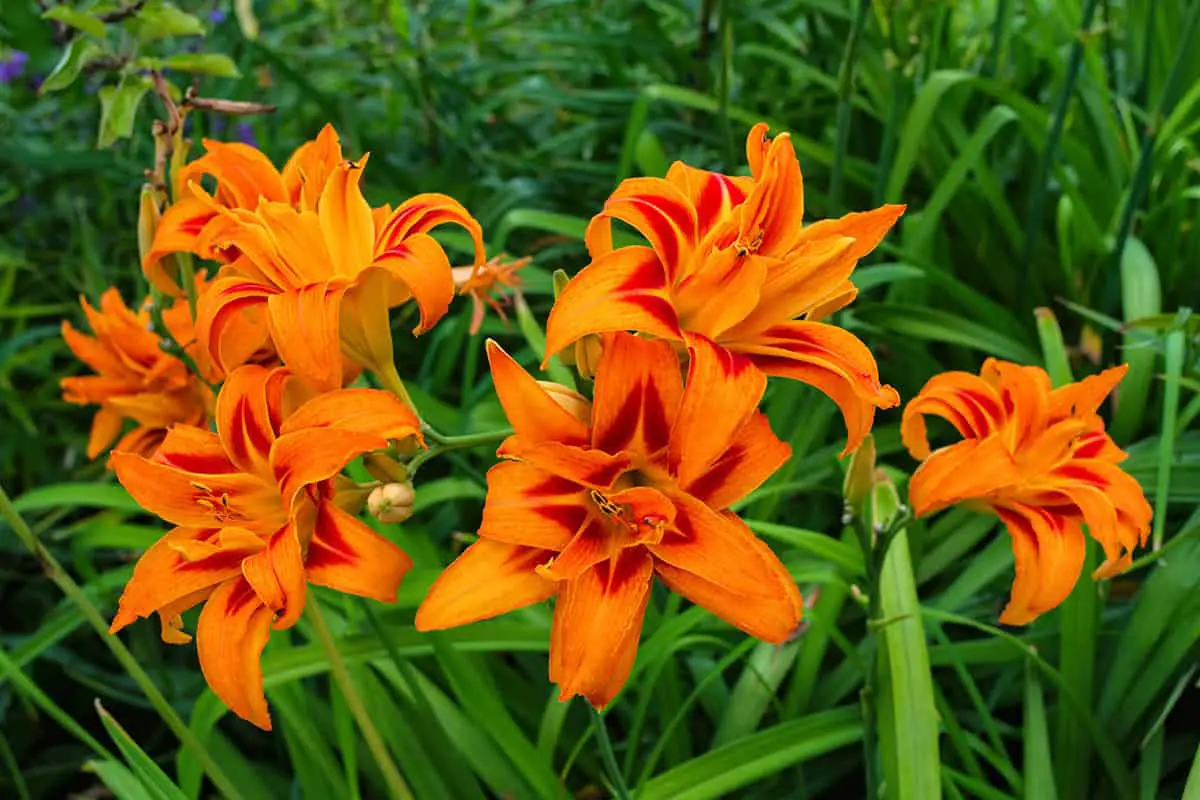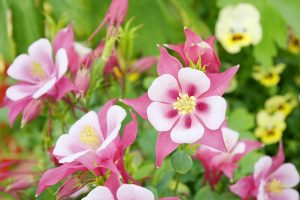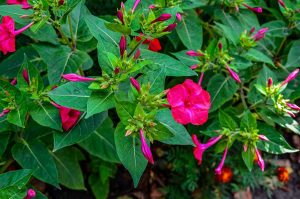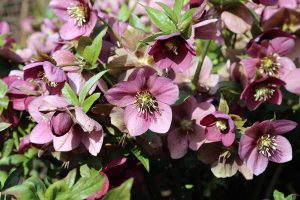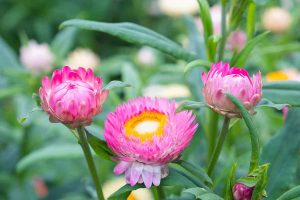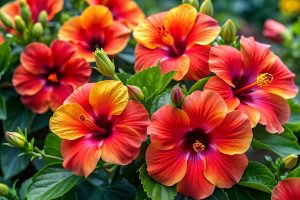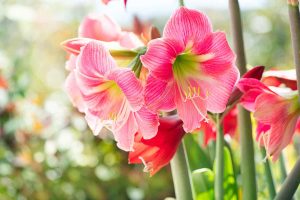You glance at your garden, feeling frustrated by the bare patches and wilted plants despite your best efforts. If maintaining a vibrant garden seems out of reach, low-maintenance flowers might be the solution you need. These hardy blooms can thrive with minimal care, bringing color and life to your yard without constant attention. Find out which low-maintenance flowers are virtually impossible to kill.
Table of Contents
Marigolds
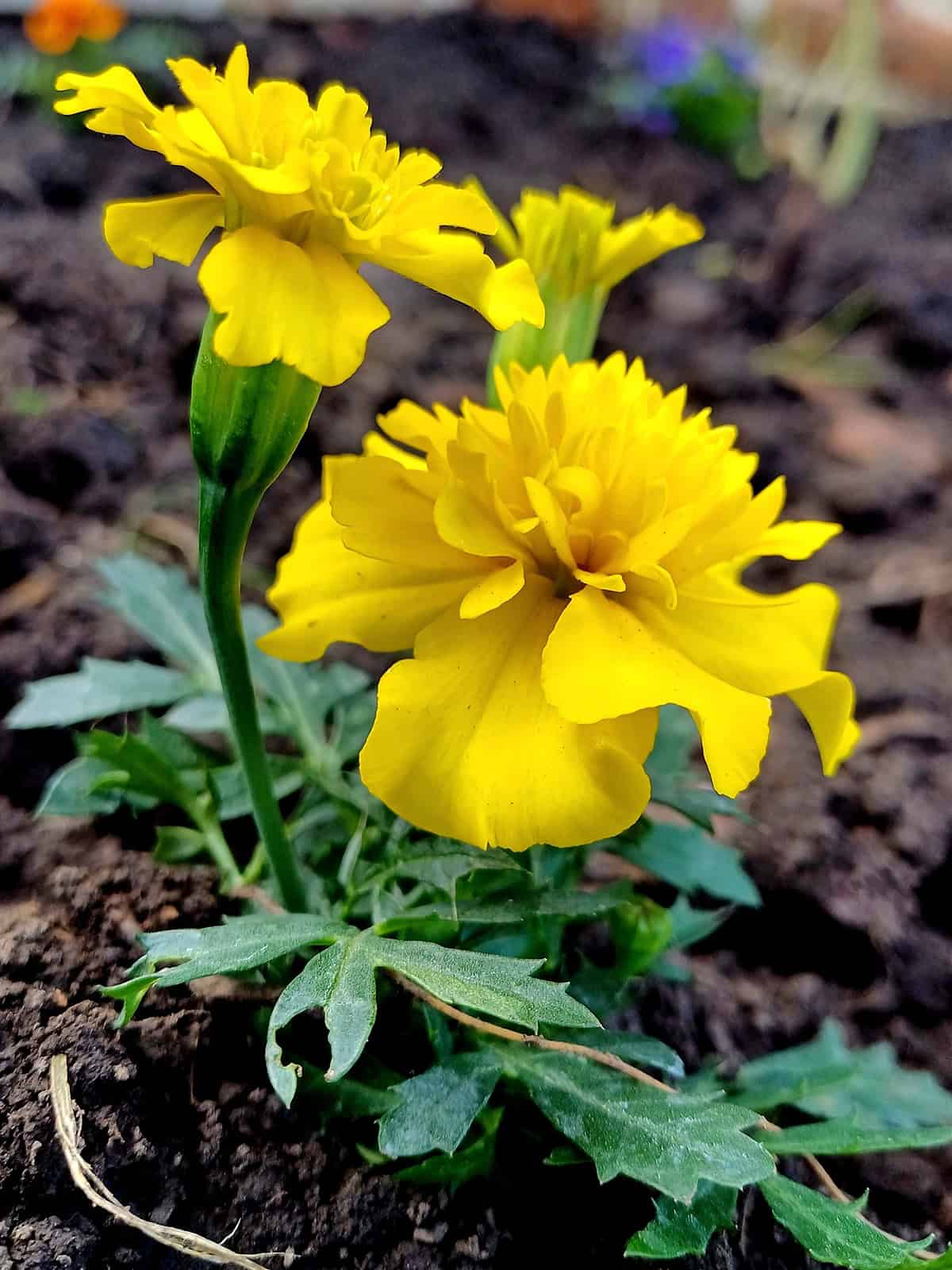
Marigolds are a staple for low-maintenance gardens. They thrive in various soil types and need minimal care. Their bright, cheerful blooms add a vibrant touch to any garden.
There are three main types of marigolds: French, African, and Signet. French marigolds are compact, usually 6-12 inches tall, and can have single or double flowers. African marigolds grow taller, reaching up to 3-4 feet, with large double flowers. Signet marigolds are the smallest, less than 6 inches tall, and have a mound-like growth habit.
Marigolds thrive in full sun and well-drained soil. They are quite resilient and can tolerate a range of soil conditions. Regular watering helps but avoid waterlogged conditions. These flowers are drought-tolerant once established.
Marigolds not only beautify your garden but also offer other benefits. They are known for their pest-repellent properties, making them excellent companion plants. The fragrant compounds in marigolds deter insects like aphids and nematodes. Some varieties of marigolds, especially Signet, have edible flowers that add color and flavor to salads.
Deadheading marigolds—removing spent blooms—promotes continuous flowering. Regular pruning helps maintain their shape and encourages new growth. Fertilizing is generally not necessary unless the soil is poor.
Zinnias
Zinnias are a fantastic choice for a low-maintenance garden. They are easy to grow and very colorful. Native to Mexico and the southwestern U.S., these bright flowers are a staple in many gardens.
Zinnias thrive in full sun and are drought-tolerant. This makes them perfect for hot climates. They offer a wide range of colors and can be planted nearly everywhere.
You don’t need to deadhead them. This saves you time. Zinnias bloom continuously throughout the season. Simply plant them and enjoy the vibrant display.
Varieties like Zahara zinnias are particularly low-maintenance. They resist disease and don’t require constant care. For a blanket of color, use these varieties in your landscape.
Consider placing zinnias in areas with good drainage and moist conditions. They adapt well to different soil types including clay, sand, and loam. Soaker hoses or drip irrigation can help during dry spells.
These flowers also make great cut flowers. Zinnias can last up to seven days in a vase. This makes them ideal for floral arrangements. You’ll enjoy their beauty indoors and out.
Incorporate zinnias into your garden to create a vibrant, low-maintenance landscape. They handle typical summer rigors and add lasting color to your space.
Coneflowers (Echinacea)
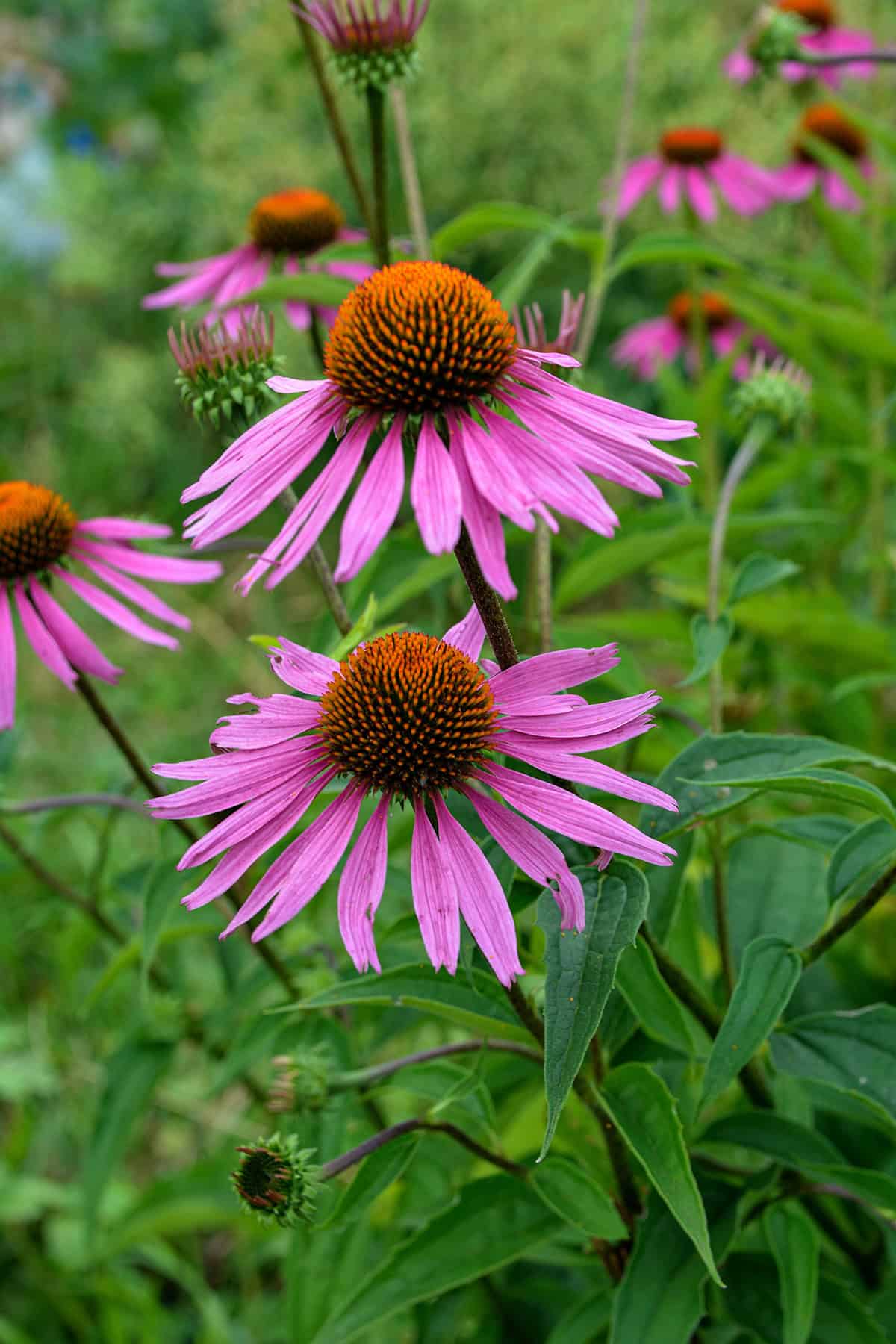
Black-Eyed Susans
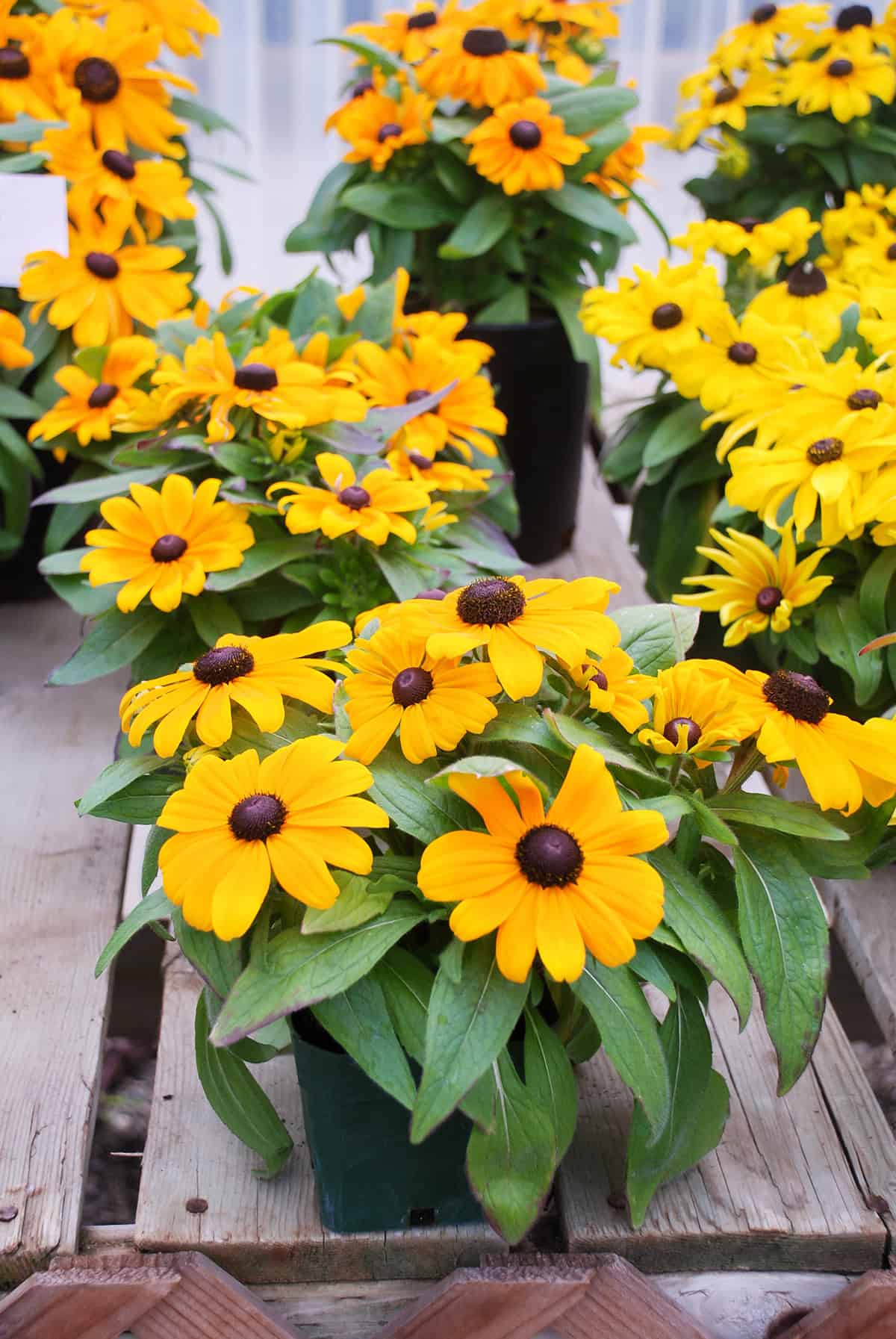
Black-eyed Susans are perfect for a low-maintenance garden. They thrive in sunny locations and well-drained soil. These hardy flowers can tolerate drought and poor soil conditions. You can plant them directly from seeds or purchase small plants.
Their bright yellow petals with dark brown centers add vibrancy to any garden. They develop flowers within ten to fourteen weeks and bloom throughout the summer. This makes them great for continuous color in your garden.
Occasionally, you should remove faded blossoms to encourage more flowers. This simple upkeep enhances their blooming period. Black-eyed Susans also make excellent cut flowers for indoor arrangements. Conditioning the stems in warm water helps them last longer in vases.
One popular variety is the ‘Goldsturm’ which reaches 24 to 36 inches in height. It has compact, mounded growth habits, making it suitable for small spaces. They are also resistant to many pests and diseases.
Native to North America, black-eyed Susans attract pollinators like bees and butterflies, promoting ecosystem health. They are a beautiful and beneficial addition to your low-maintenance garden.
Daylilies
Daylilies are a top choice for low-maintenance gardening. These perennials thrive in various soil and light conditions. Once established, they require minimal care.
You should space daylilies 18 to 24 inches apart. Ensure the crown is no deeper than 1 inch below the soil. Water them thoroughly after planting and continue weekly deep soaks until they’re established.
Daylilies grow best with full morning sunlight. They can suffer in the intense afternoon heat. If possible, provide some afternoon shade to protect them from extreme temperatures.
These flowers are drought-tolerant and only need watering once or twice a week. Fertilize twice a year using balanced fertilizers like 8-8-8 or 10-10-10. Keep the fertilizer off the foliage to avoid damage.
Daylilies can become crowded over time. When this occurs, you should divide them to encourage more blooms. Divide clumps every few years to maintain healthy growth.
Daylilies adapt to winter well and can survive with little injury. This makes them excellent for garden borders and as backdrops for other plants. Their resilience and adaptability make them perfect for beginners and experts alike.
In addition to their beauty, daylily petals and buds are edible. They can be used raw or cooked in various dishes. Some Chinese recipes use dried daylily petals, known as “golden needles” for their unique taste and texture.
Sedum (Stonecrop)

Sedum, also known as Stonecrop, is a plant you can’t kill. This plant thrives in extreme heat and drought conditions, making it perfect for low-maintenance gardening. Sedum is a succulent with fleshy leaves that retain water.
You can find Sedum in various shapes and sizes. Some species spread along the ground, while others grow upright. Sedum’s hardiness extends to cold climates. It can survive as far north as USDA Hardiness Zone Three.
The Sedum ‘Sunsparkler®’ series includes cultivars with showy leaves and flowers. These flowers bloom in late summer to early fall. The leaves come in a variety of shapes and colors, making them attractive all year round.
Sedum lineare, another popular type, features star-shaped yellow blooms. These flowers appear in late spring to early summer. This species is known for its ascending or weeping growth habit.
Begonias
Begonias are ideal for those seeking low-maintenance flowers. These plants thrive in shaded areas, making them great for gardens that lack direct sunlight. You can choose begonias for their vibrant flowers or attractive foliage.
Tuberous begonias offer a range of flower colors, including white, yellow, orange, rose, red, and pink. They require frequent watering, but be careful not to overdo it, as too much water can cause flower bud drop.
When planting tuberous begonias, use a well-drained potting mix. Place the tubers with the concave or indented side upward. Cover them with 1/2 to 1 inch of soil and water them thoroughly.
To save your tuberous begonias from frost, remove the plant from its pot before the first frost hits. Cut back most of the top of the plant, leaving the ball of roots and soil intact. Store them in a dry, cool area like a basement or garage.
Begonias fall into four main types: wax, tuberous, cane, and rhizomatous. Wax begonias are great for garden beds, while tuberous types are perfect for containers or hanging baskets. Cane and rhizomatous begonias are often grown for their foliage.
Geraniums
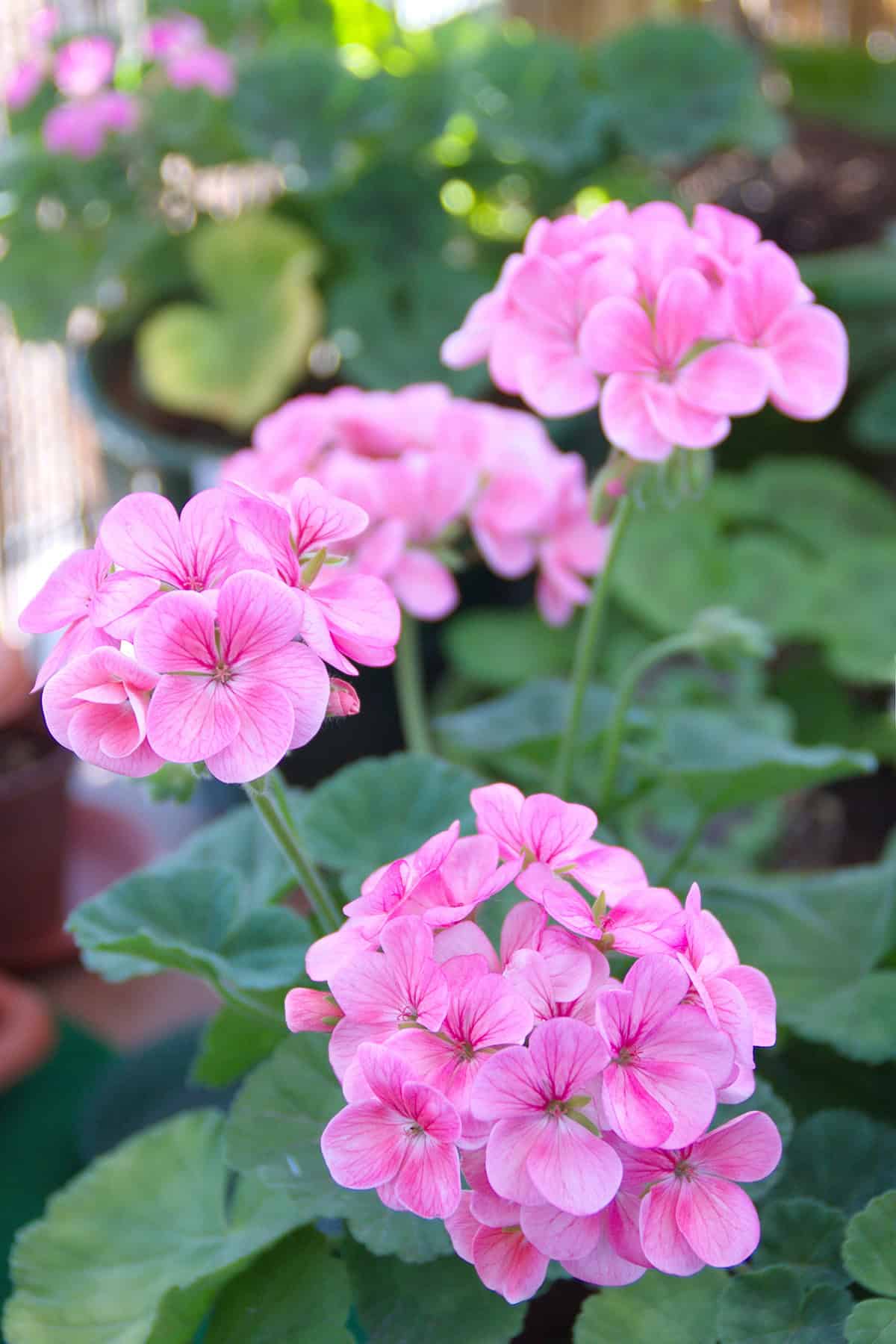
Geraniums are resilient and easy to grow. They tolerate different conditions and need well-drained soil.
You can grow geraniums indoors or outdoors. They thrive in sunlight, so make sure they get at least six hours of direct sun each day. If they get less light, they may flower less.
Water geraniums moderately, and let the soil dry out between watering to prevent root rot.
Pruning keeps geraniums healthy. Remove dead or yellowing leaves and pinch off spent flowers to promote new blooms.
Geraniums can be started from seeds or cuttings. Both methods are effective. Keep them indoors during cold weather. They can be perennial in warmer areas.
Hostas
Hostas are popular shade-loving perennials. They thrive in low-light conditions and are well-suited for adding interest to shaded garden spots. Native to northeast Asia, they were discovered as early as the eighth century.
You can find hostas in various sizes and colors. They range from small varieties that fit in pots to large ones that can dominate a garden bed. Their foliage is typically lush and can be green, blue, or variegated with white or yellow edges.
These plants are incredibly low-maintenance. Once established, they require minimal care. This makes them ideal for gardeners who want beautiful plants without much effort. Hostas have fleshy roots and short-spreading rhizomes, which help them anchor in the garden soil.
Hostas also help suppress weed growth. Their broad leaves cover the soil, reducing the space available for weeds. This natural weed suppression can save you time and effort in garden maintenance.
Hostas are winter-hardy perennials. They can survive harsh winters, making them a reliable choice for temperate regions. In the spring, their leaves emerge from a central crown and quickly develop into a mounded form.
If you have a shaded area in your garden, consider planting hostas for their resilience and beauty. They are a reliable and attractive option for areas that do not receive full sun.
Yarrow
Yarrow is a resilient perennial that thrives with minimal care. You can find yarrows in a variety of colors, including white, yellow, pink, and red. This hardy plant is perfect for gardeners of all skill levels.
You can plant yarrow in sunny locations where it will flourish. The soil can be poor and dry, as yarrow prefers well-drained conditions. Avoid overly moist or clay-heavy soils.
Achillea millefolium is a popular type of yarrow. It grows about 2 to 3 feet tall and is often used in rain gardens. This variety is also known for its multiple common names, such as soldiers’ woundwort and bloodwort.
Yarrow is especially appreciated for its long-lasting blooms. The flowers appear in dense clusters and can be seen from June to September. These blooms make yarrow an excellent choice for cut or dried flowers.
If you’re looking for a groundcover, Achillea tomentosa, also known as Woolly Yarrow, is a suitable option. This low-growing species is semi-evergreen and performs well in dry, sandy soils.
Yarrow’s finely divided leaves are aromatic and can vary from simple to intricate patterns. These leaves add visual interest to your garden. It is a plant that not only survives but thrives with minimal attention.
Catmint (Nepeta)
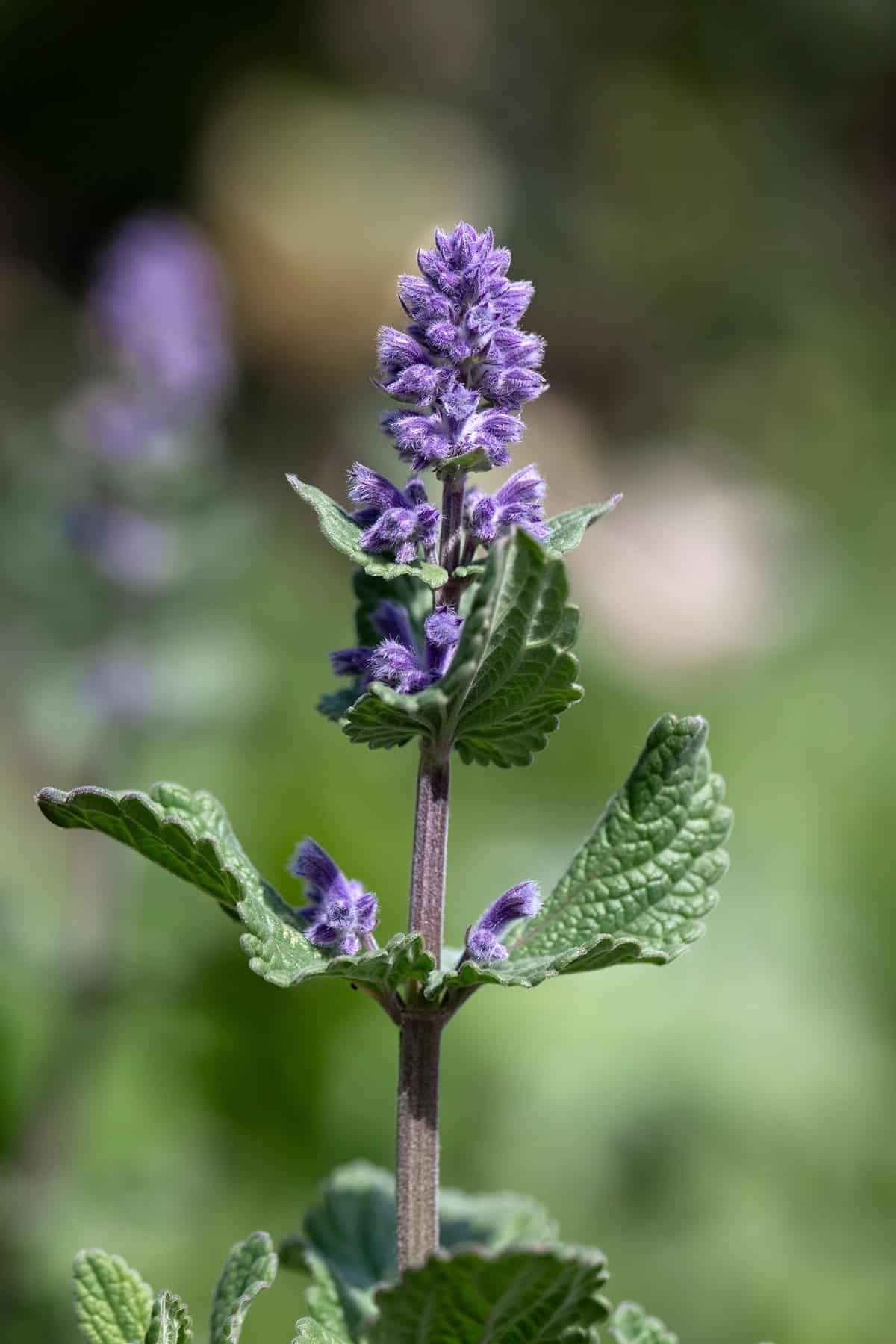
Catmint (Nepeta) is a versatile, easy-to-grow perennial. It’s part of the mint family and is known for its aromatic foliage. Catmint thrives in full sun and well-drained soil.
This plant is often favored for its resilience. It flowers throughout summer, adding a splash of color to gardens. It’s drought-tolerant and can deter deer, making it a great choice for many gardeners.
Various species and hybrids exist within catmint. These include Nepeta x faassenii, which is notable for its deep lavender-blue flowers. Varieties like ‘Walker’s Low’ and ‘Six Hills Giant’ offer different heights and flower colors.
Catmint can be used in borders, as a ground cover, or even in containers. It’s effective when planted in large masses, providing a clean, uniform appearance.
When handling catmint, you’ll notice it has a strong scent that cats find attractive. This makes it enjoyable for both you and your feline friends.
Coreopsis

Coreopsis, often called tickseed, is hardy and beautiful. You can find it lining roadsides, fields, and gardens. Its bright yellow daisy-like blooms make it a garden favorite.
This native perennial thrives in various climates. It’s Florida’s state wildflower and comes in many species. Some have feathery foliage, like the Threadleaf Coreopsis, known for its drought and heat tolerance.
Ear-leaved tickseed and its relatives bloom from spring to summer. The flowers, 1-3 inches wide with 8 petals, are radiant and cheerful. They form in clusters, adding a vibrant touch to your garden.
Coreopsis is low-maintenance and resilient. It can handle poor soils and neglect. Most species, such as Coreopsis auriculata, bloom best with minimal care. They thrive in full sun but can tolerate partial shade.
To plant coreopsis, choose well-drained soil. Water sparingly after establishment, as minimal watering ensures the plant stays healthy. Deadheading spent flowers promotes more blooms.
You can enjoy blooms from different coreopsis species nearly all year round. Choose plants like Broadleaf Coreopsis that bloom from July to September. This variety grows up to four feet tall in rich, moist woodlands.
Shasta Daisies
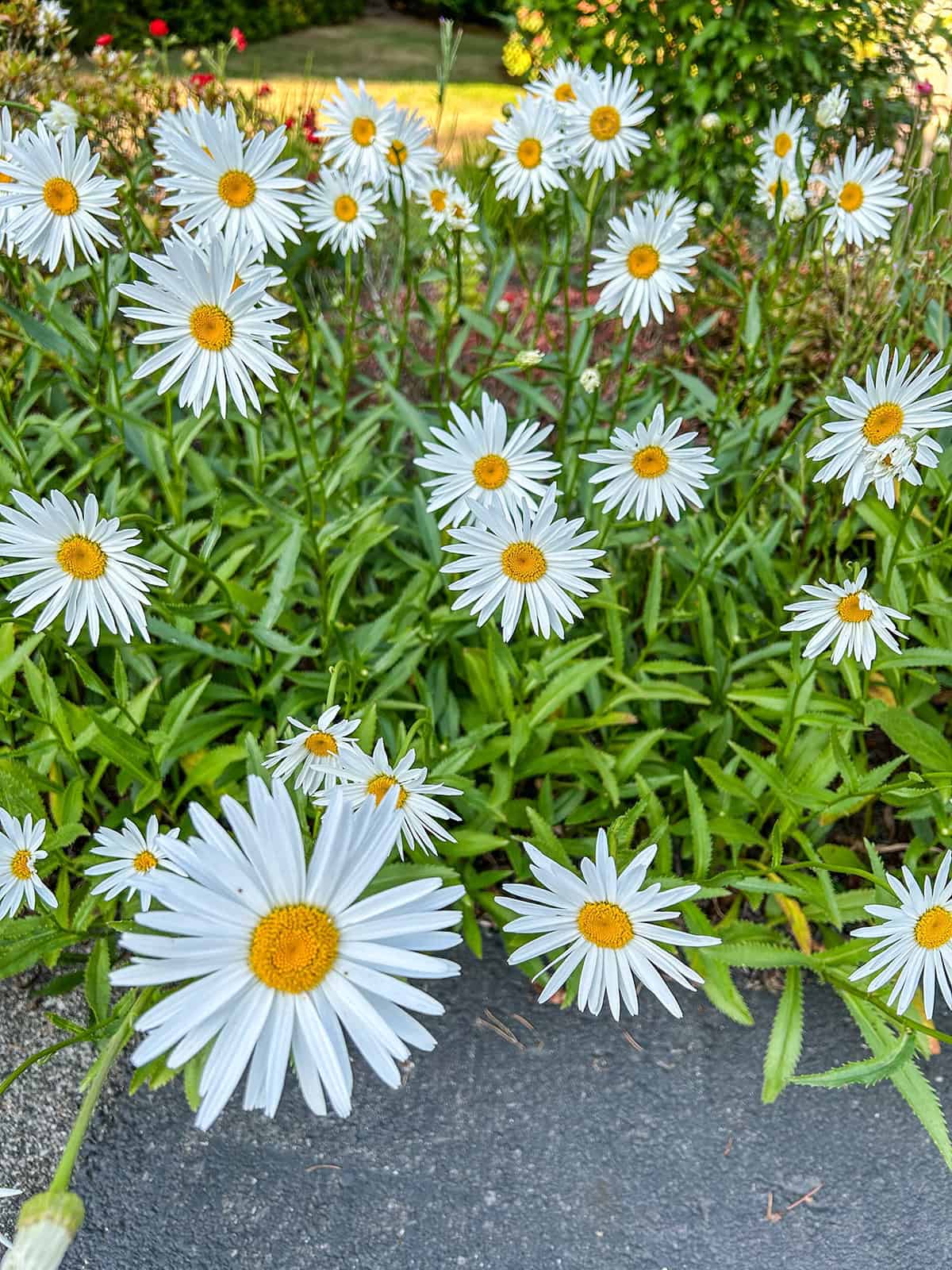
Shasta daisies are robust and low-maintenance. They bring cheer to any garden with their white petals and yellow centers. They thrive in full sun but can tolerate partial shade. Their adaptable nature makes them a great choice for effortless gardening.
These perennials can grow between two to four feet tall. They form bushy clumps about two feet wide. If you need to divide them, do so every three to four years. This helps keep the plants healthy and looking their best.
Deadheading spent flowers can prolong blooming. This means removing the wilting blooms, which encourages new growth. You can enjoy their charming flowers from June through September. These daisies serve as excellent cut flowers for indoor arrangements.
Plant Shasta daisies in moist, well-drained soil for optimal growth. Water them regularly, especially during dry spells. They are generally low-maintenance but keep an eye out for pests like aphids and slugs. If needed, stake taller plants to prevent them from flopping over.
There are wide varieties of Shasta daisies, including the popular ‘Alaska’ and ‘Becky’. ‘Alaska’ grows about 3.5 feet tall, while ‘Becky’ reaches about three feet. Each variety offers unique flower forms, from single to frilly petals.
Some cultivars are more well-behaved than others. Choose carefully if you’re concerned about invasiveness. Despite their resilience, Shasta daisies may struggle in extreme heat, especially in southern climates.
Cosmos
Cosmos flowers are an excellent choice for those seeking low-maintenance blooms. These flowers thrive in full sunlight and well-drained soil. Over-fertilizing can lead to more foliage and fewer blooms, so it’s best to avoid rich soils.
These annuals are known for their resilience in hot, dry conditions. They are perfect for gardens that receive at least a half-day of direct sunlight. Cosmos seeds germinate in about a week and bloom within eight to twelve weeks.
There are many varieties of Cosmos, with Cosmos bipinnatus and Cosmos sulphureus being the most common. Cosmos bipinnatus features purple, pink, and white flowers. These plants can range in height from 1 to 6 feet, providing a striking visual display.
Cosmos flowers can reseed themselves, which means they may reappear each year with minimal effort on your part. Once planted, they require little care beyond occasional watering. These hardy flowers bloom from summer until frost, adding color to your garden for an extended period.
Cosmos is also a favorite for pollinators like bees and butterflies. This can enhance the biodiversity of your garden. The even placement of their petals, derived from the Greek word for harmony, makes them visually appealing.
Blanket Flower (Gaillardia)
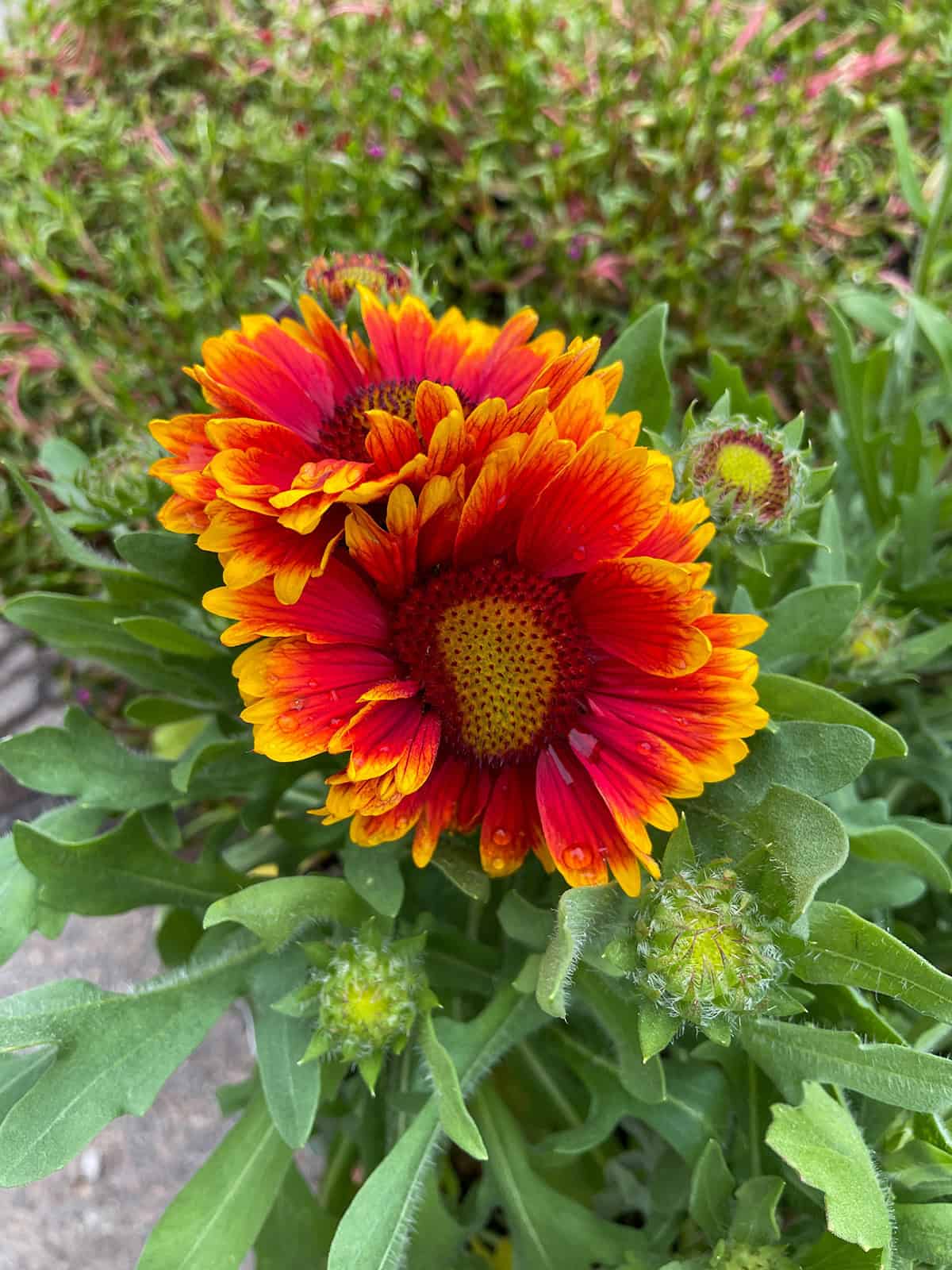
The Blanket Flower, also known as Gaillardia, is a short-lived perennial that can also be grown as an annual. The vibrant colors of its flowers are sure to brighten your garden.
Blanket Flowers thrive in full sun and well-drained soil. These blooms are drought-tolerant and need minimal watering once established. They’re perfect for hot, sunny areas and attract pollinators like butterflies.
Gaillardia plants bloom from summer into fall. The flowers feature red, orange, and yellow hues. This adds a striking visual appeal to any garden space. You can expect blooms nearly every day during their flowering season.
Gaillardia is easy to grow and maintain. It’s ideal for gardeners who want beautiful flowers without extensive care routines. Consider adding Blanket Flowers to your garden if you need a splash of color with little effort.
Bee Balm (Monarda)
Bee Balm (Monarda) is a hardy perennial that can beautify any garden. Native to North America, this plant belongs to the mint family. It is known for its striking flowers and easy care.
Monarda grows between 2-4 feet tall. It features clusters of vibrant blooms. These can be red, pink, or lavender. The unique, tubular flowers attract hummingbirds and bees.
You don’t need to worry much about soil quality. Monarda thrives in medium to dry soil. It also tolerates full sun to part shade. This makes it versatile for various garden spots.
Watering is minimal. Monarda can handle dry conditions once established. It’s a great choice for low-maintenance gardening.
Diseases are rare for Bee Balm. Powdery mildew is the main concern. Plant it with enough space for good air circulation. This reduces mildew risk.
Deadheading flowers can encourage more blooms. Leave seed heads on the plants for added winter interest. The dried heads also attract birds.
Russian Sage
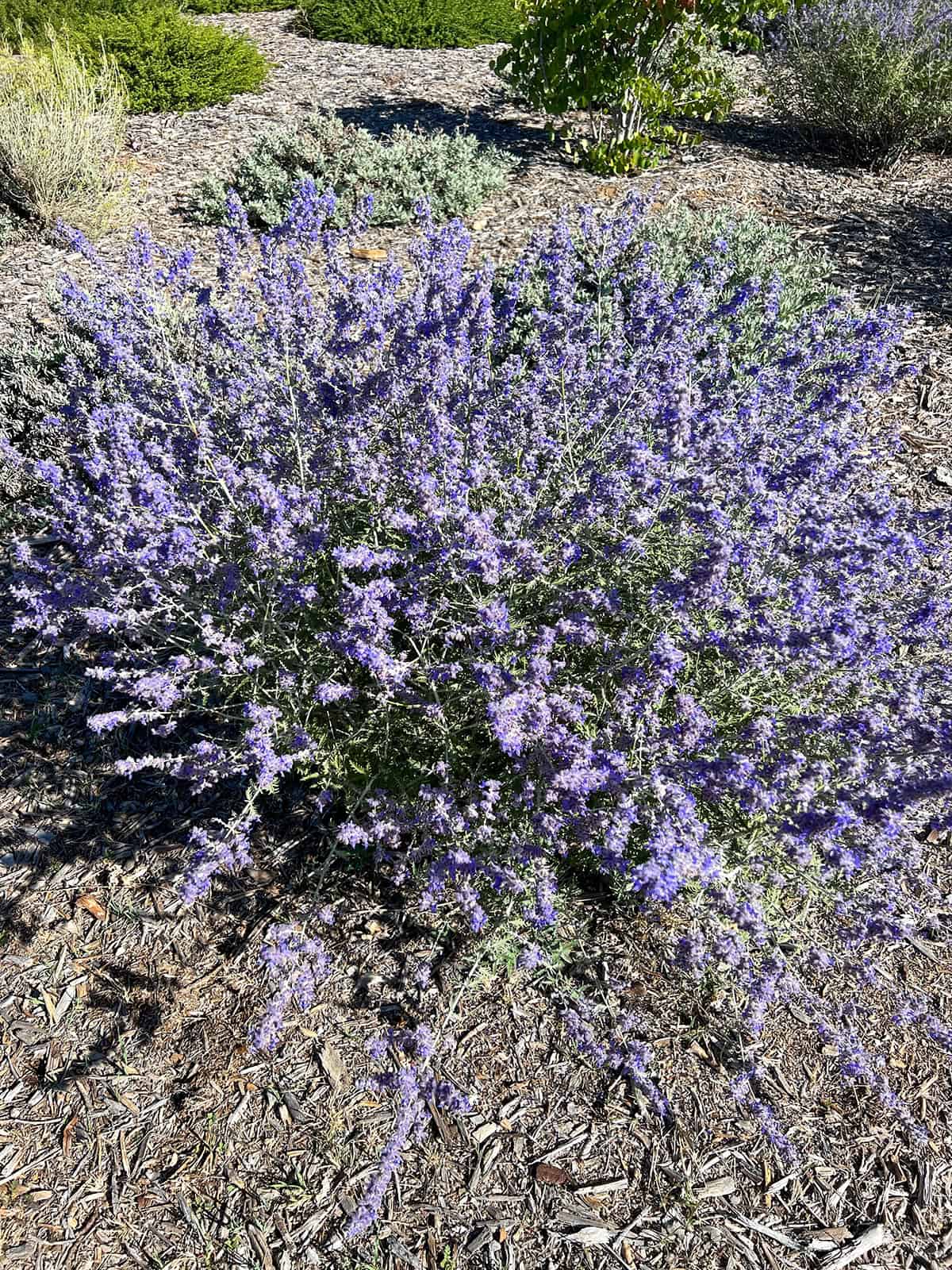
Russian sage is a hardy, low-maintenance plant. It’s perfect for those who want easy-to-grow flowers. This perennial shrub belongs to the mint family. It features silvery-green leaves that release a pleasant aroma when crushed.
The plant grows 2 to 4 feet tall and wide. It thrives in full sunlight. Being drought-tolerant, it requires very little water. This makes it an excellent choice for xeriscaping gardens.
Russian sage has soft, purple flowers. These blooms appear on new wood, so prune the plant to about one foot tall in winter. This encourages new growth and flower production.
This plant resists deer and pests, reducing your need for intervention. It stands up well in different conditions, making it low-maintenance.
Russian sage prefers well-drained soil. It can flourish in a variety of soil types, including poor soils. This adaptability adds to its low-maintenance nature.
Its attractive blooms provide a striking contrast when paired with yellow flowers. It can be used in various parts of your garden, whether as a border or a specimen plant.
Russian sage also benefits pollinators, serving as a nectar source for bees. It works well in combination with other plants like coneflowers.
Sweet Alyssum
Sweet Alyssum requires minimal care and thrives in a variety of conditions. This plant blooms with small, honey-scented flowers that create a delicate, fragrant display.
Sweet Alyssum grows 3-9 inches tall and spreads 10-48 inches wide. It performs best in well-drained soil with full sun, though it can tolerate partial shade. You should water and fertilize it regularly to promote maximum flowering.
Sweet Alyssum is also pest-free and deer-resistant. You don’t have to worry about frequent pest control or damage from wildlife. It blooms from spring to frost, providing long-lasting beauty.
For those interested in attracting beneficial insects, Sweet Alyssum is ideal. You can plant it from October until late spring, and you can start it indoors or plant it directly outdoors. It’s an easy, accessible option for gardeners of all skill levels.
Sweet Alyssum is a low-growing, spreading plant that you can enjoy in garden beds or containers. It’s adaptable and offers a charming touch to any garden space.
